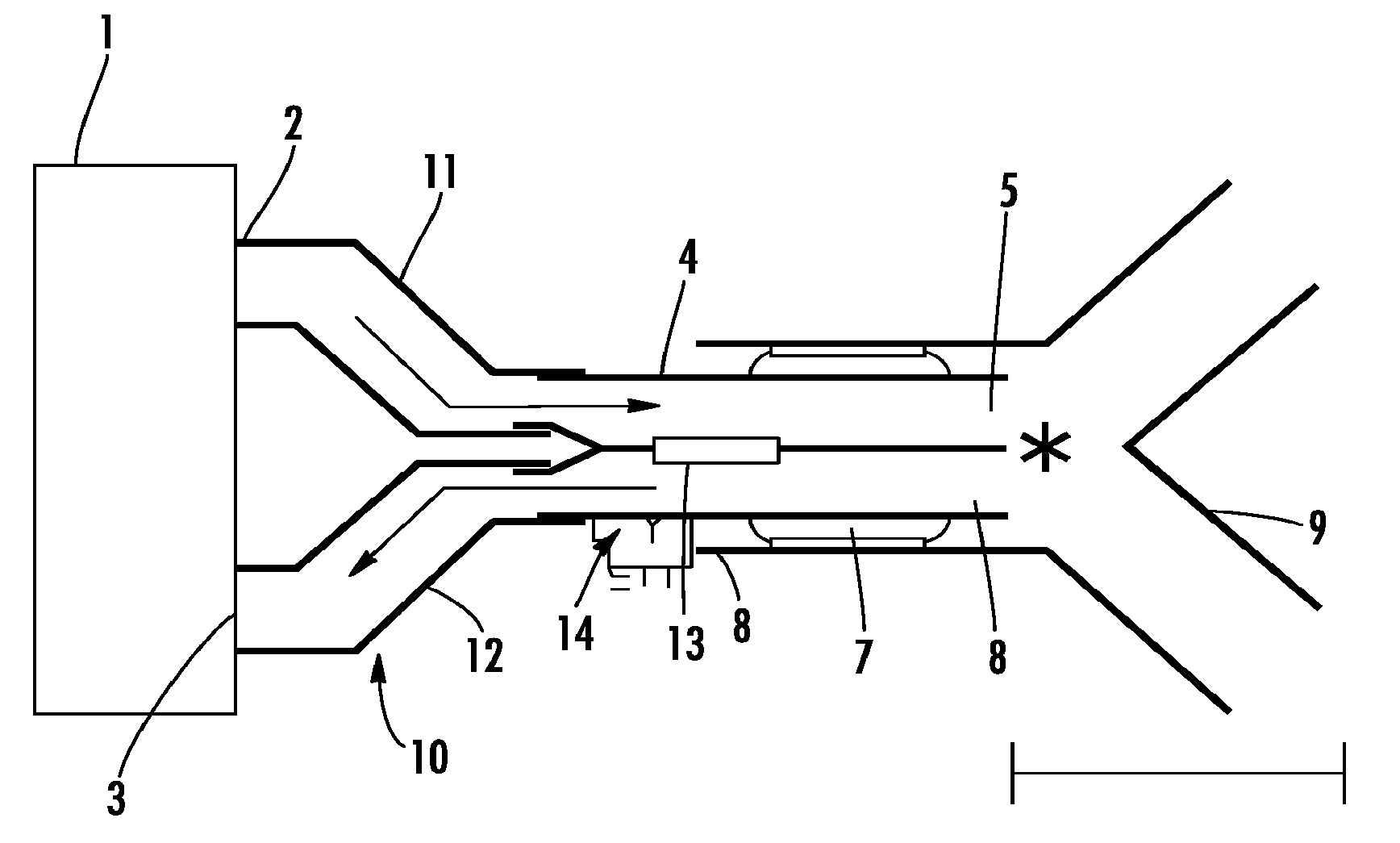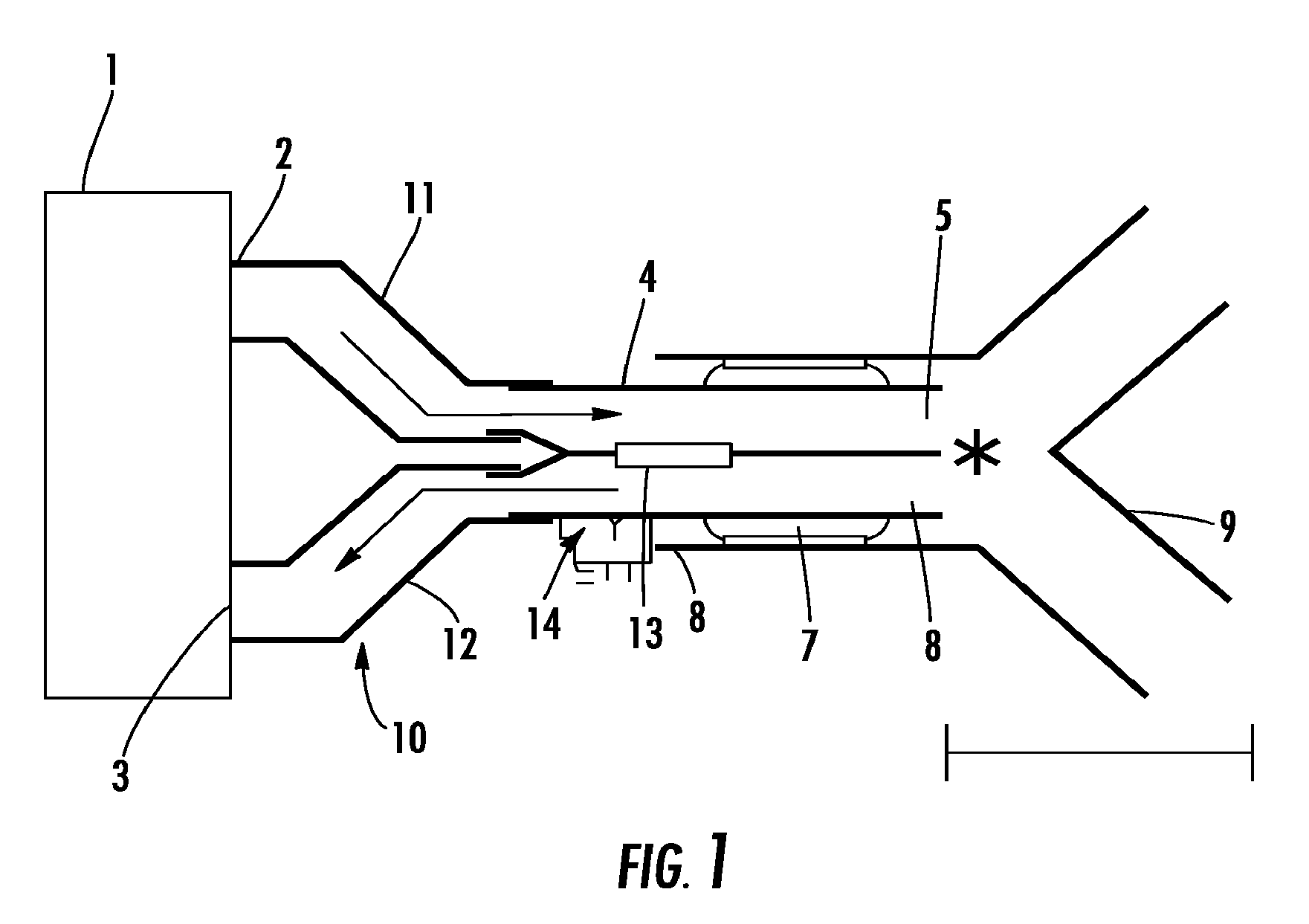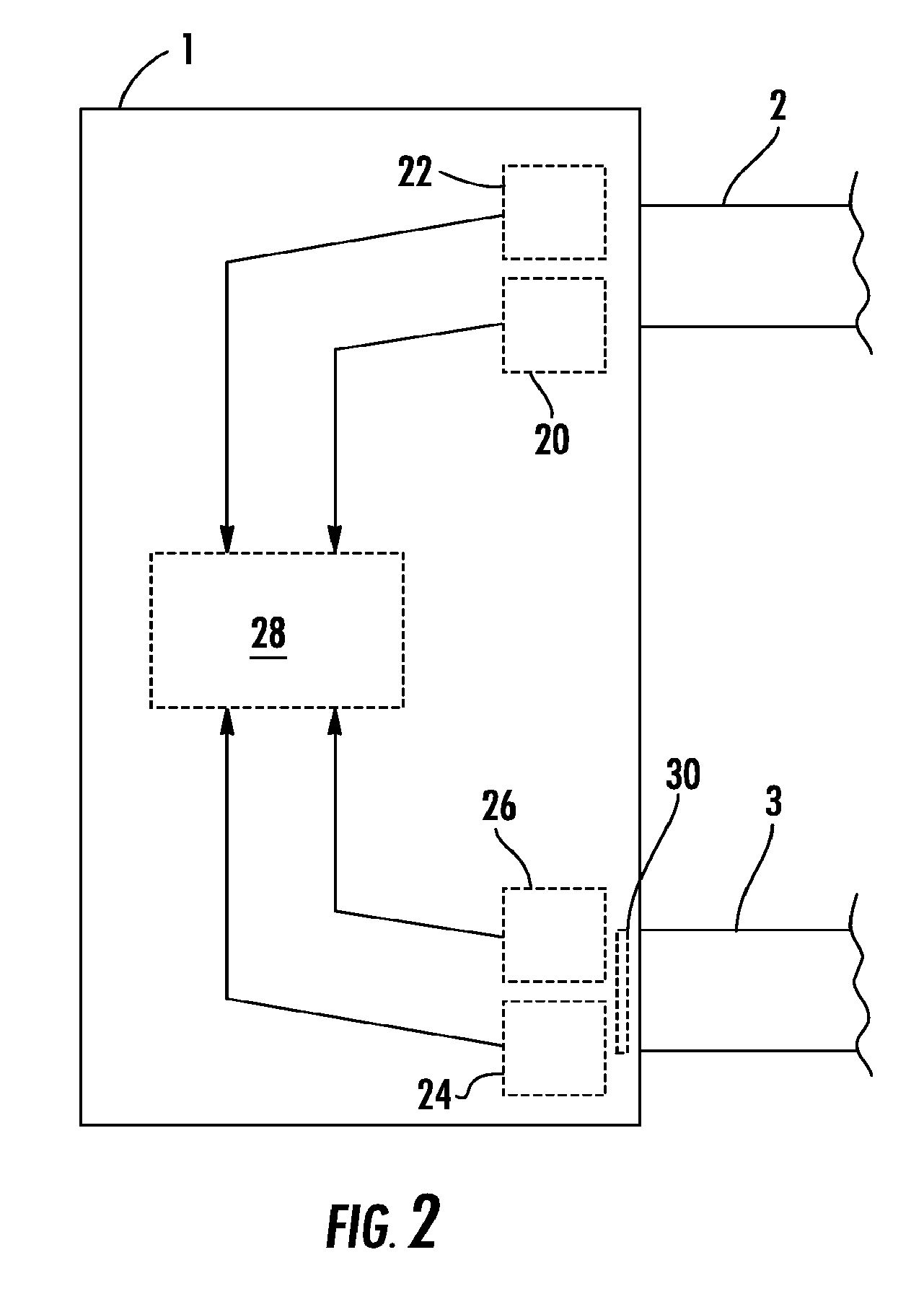Device for artificial respiration with an endotracheal tube
a technology of endotracheal tube and endotracheal tube, which is applied in the direction of tracheal tube, valve details, medical science, etc., can solve the problems of only being able to monitor the properties of the tube, the monitoring cannot discriminate or associate the mechanical properties of the structure beyond the y connection piece, and the patient is a danger to the patient, so as to avoid a disadvantageous increase in flow resistance and reduce the effect of expiration
- Summary
- Abstract
- Description
- Claims
- Application Information
AI Technical Summary
Benefits of technology
Problems solved by technology
Method used
Image
Examples
Embodiment Construction
[0053]While this invention may be embodied in many different forms, there are described in detail herein a specific preferred embodiment of the invention. This description is an exemplification of the principles of the invention and is not intended to limit the invention to the particular embodiment illustrated.
[0054]The device for ventilation comprises a ventilator 1 with an outlet 2 at which a stream of gas is provided and an inlet 3 to which a stream of expired gas can be fed. At the inlet 3, the ventilator 1 has an active valve which is closed during inspiration in order to maintain the pressure in the lungs, and which is opened during expiration. Behind the valve, the expired gas can be released to the environment. Alternatively, the stream of expired gas can be prepared for reuse in the ventilator 1 (by removing the CO2) and the gas needed for ventilation will be re-supplied to the outlet where fresh ventilation gas can be admixed.
[0055]Further, there is an endotracheal tube 4...
PUM
 Login to View More
Login to View More Abstract
Description
Claims
Application Information
 Login to View More
Login to View More - R&D
- Intellectual Property
- Life Sciences
- Materials
- Tech Scout
- Unparalleled Data Quality
- Higher Quality Content
- 60% Fewer Hallucinations
Browse by: Latest US Patents, China's latest patents, Technical Efficacy Thesaurus, Application Domain, Technology Topic, Popular Technical Reports.
© 2025 PatSnap. All rights reserved.Legal|Privacy policy|Modern Slavery Act Transparency Statement|Sitemap|About US| Contact US: help@patsnap.com



